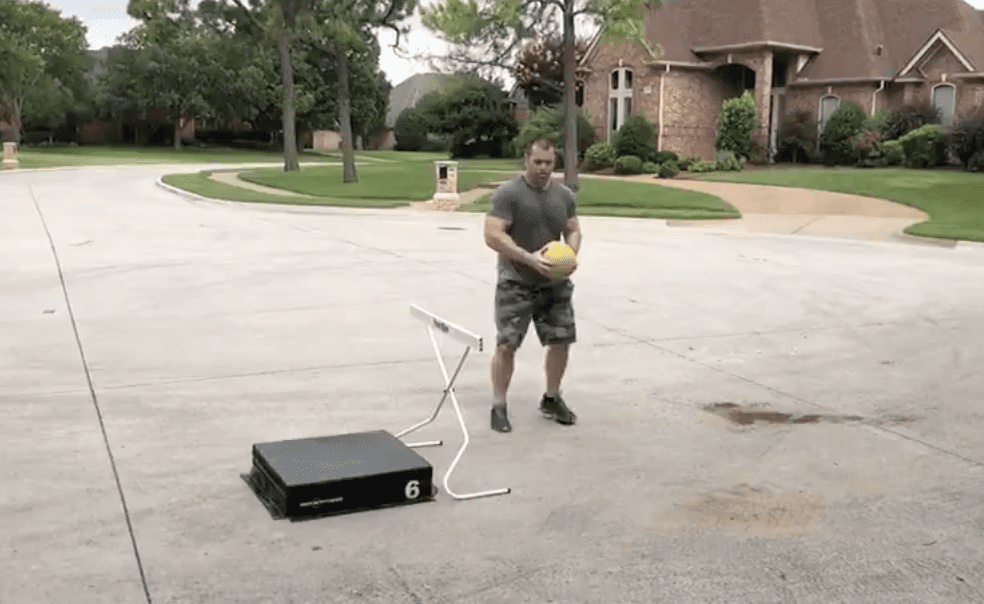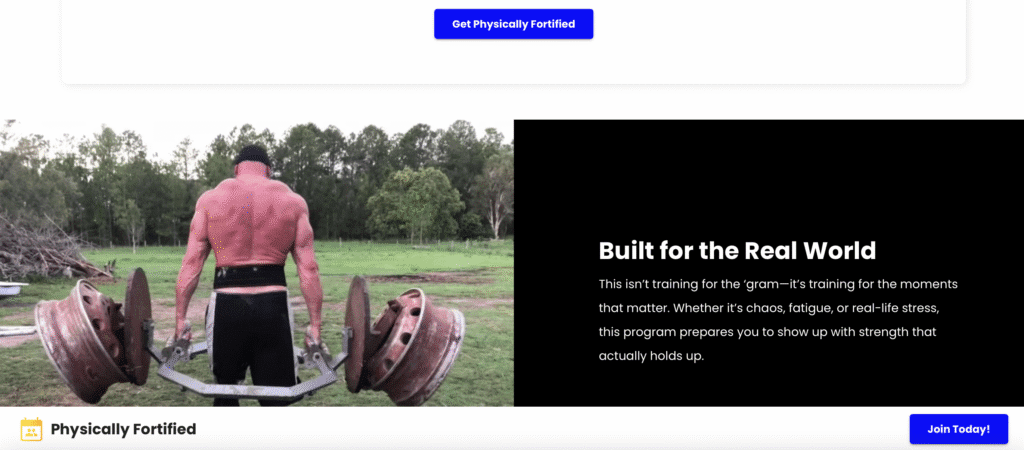Train Violently to Be Violent: The Path to Explosive Power
By Josh Bryant and Joe Giandonato
Explosive Strength Training with Josh:
Lost in Translation
While maximal strength sits atop the food chain, being strong as an ox, but slow to show it just means more splinters in your ass from riding the pine. The great ones don’t just hoard strength—they unleash in fractions of a second with unrelenting fervor—turning raw horsepower into game-time domination. That is the name of the game in powerlifting, but when it comes to the field of play, the ring, tactical situations, or the court, it’s about applying that strength fast.
Strength versus Force
Maximal strength, or limit strength, is the amount of muscular force that can be produced during a single all-out effort, regardless of time. Force, on the other hand, is a time-dependent expression of strength—it’s defined by the magnitude or rate at which the mass of a body or object moves. Force is the product of that mass and acceleration, expressed as:
F = m · a
Filling in the Gap with RFD
Rate of Force Development (RFD) is how quickly you can dispatch and display strength. A muscle’s horsepower comes from the contractile component (how fast it can contract), and to a lesser extent the parallel and series elastic components (the elastic rebound that adds recoil).
Training RFD is about making those motor units fire like a coordinated firing squad—rapid recruitment, activation, and synchronization. The mission: hit max force at the very start of the movement—no windup, no bounce, no stretch reflex. Like Anthony Schlegel says, “train violently to be violent.” Raw power from the start of the movement.

Excessive Force is a new breed of training—it’s about speed, power, agility, and movement capacity, so you can dominate.
Turn up the Tension
Tension is a key player in force production. Just grabbing a barbell with a crushing grip ignites a chain reaction of muscular tension called irradiation. This tightness lets you transfer more force. That’s why cues like “brace the core” have been around forever—they work. Tension makes energy move cleanly through the body when you lift.
Some coaches argue muscles don’t “know” weight, they only know tension. That’s mostly true—tension drives nervous system activity. And the nervous system (the body’s command center) is what actually runs the show. Nerves and muscles talk nonstop: sensory organs report muscle tension and length, the CNS responds by firing motor units to crank out force against resistance.
Keep in mind, tension and muscle length are always shifting. The force–length relationship tells us muscles make their most force isometrically—when they’re at mid-length and the most myosin cross-bridges are locked in. Stretch a muscle too long or shorten it too much and fewer cross-bridges can form, so less force gets produced.
RFD Training Prerequisites
If you want to get the most out of RFD training, you’ve got to have a respectable base of limit strength first. Don’t try to bolt a turbo on an underpowered lawnmower engine, instead build a mighty cast iron block of strength by hoisting heavy pig iron to optimize your RFD training pursuits. As a rule of thumb, you should be within striking distance of benching 1.25x your bodyweight, squatting 1.5x, and pulling 1.75x. If you’re not there yet, the priority is simple—get strong by sticking with the basics.
RFD training isn’t unsafe, but when you’re weak, the quickest way up the mountain is building limit strength first. That’s the lowest-hanging fruit—stack a big base of raw horsepower before worrying about turning it into lightning-fast power. Add in that once you’ve built that foundation, RFD training hits harder, carries over further, and pays off bigger.
The good news? You can build max strength and RFD at the same time—research shows that getting stronger also boosts RFD in less-trained lifters.
In sports, you don’t get five seconds to wind up. You need to unleash big force fast. Even in powerlifting, where limit strength rules, moving the bar quicker reduces sticking points and lowers injury risk. Attack the bar with speed in mind, and it’ll feel lighter.
Speed kills. Always has, always will. On the force–velocity curve, speed is the final destination.

So how do you take someone who’s already strong and make them faster, more explosive? You bridge the gap with starting-strength and explosive-strength training—turning raw horsepower into violent, nitrous-fed performance.
Train for Starting Strength
Starting strength is your ability to light up muscle fibers fast—recruiting as many as possible, as quickly as possible. You build it with “dead movements,” concentric-only lifts from a dead stop. No bounce, no stretch reflex, no momentum—just raw force.
The king? The deadlift. Compared to squats, step-ups, or lunges at the same load, it drives the most concentric RFD. Step-ups come in second. You can also pull squats or presses from the pins, or bench from safeties/paused on the chest—same idea, no help, just brute drive.
Even static jumps—seated or fixed position—strip away the stretch shortening cycle and sharpen your starting strength. Bottom line: the faster you can flip the switch and recruit fibers, the more force you produce.
Dead Bench Symposium:
Train for Explosive Strength
Explosive strength is your body’s ability to keep max force firing from start to finish. Picture an O-lineman pancaking a defender or a shot putter launching steel like a cannonball.
You build it with Olympic lifts, CAT, and slapping bands or chains on the bar—forcing you to accelerate hard all the way through.
This ain’t “move the weight” strength. This is scary strong at warp speed—put every ounce of your chi into the lift, then detonate like a backwoods meth lab. That’s how you go from strong… to downright dangerous.
Train for Explosive Triple Extension
Sans dart throwing, croquet, and trolling on X, triple extension is king in sport and life. It’s what makes a forward posterize a defender with a thunderous dunk, an outfielder rob a lasering line drive, or a wide receiver rise above a leaping corner for six.
But it isn’t just for game day—triple extension shows up when you’re sprinting through the airport to catch a flight, vaulting a fence to escape a stray dog, or jumping high enough to snag that box off the top shelf at Walmart.
Triple extension = hips, knees, and ankles firing together. Vertical, horizontal, lateral—it’s all fair game. Purists preach Olympic lifts, but you can build it with plyos, trap bar jumps, and strongman loading or throwing events—stones, logs, kegs, sandbags, you name it.
Bottom line: triple extension is the athletic cheat code—whether you’re after PRs, paychecks, or just running from pissed-off mutts.
Jump Training teaches you to stack force and unload it like a fireworks stand catching a spark on the 4th of July. No need for Olympic lift wizardry—just the right progressions and some guts.
Before you go leaping around like a goat on caffeine, nail the basics:
- Squat Holds
- Bodyweight Squat
- Squat + Pause → mini hop, soft landing
- Vertical Jump from a half squat
- Quick dip squat into a big jump
Then you move on to the rowdy stuff—single-leg, weighted, bounding, hurdles, depth jumps. Land on a box or forgiving surface so you don’t turn your knees into gravel.
Bottom line: jump training builds explosive horsepower. Do it right, and you’ll come off the ground faster than a coonhound chasing a hot-dog cart.
Training with Submaximal Loads
When the goal is boosting Rate of Force Development (RFD), you can’t skip the heavy stuff—you still need to build that limit strength foundation. But here’s the kicker: you attack your submaximal work with Compensatory Acceleration Training (CAT).
That means every rep—whether it’s 70% or 90%—you treat it like you’re trying to launch the bar into orbit. Heavy weights may not actually move fast, but your intention to move them fast is what drives the nervous system adaptations.
Bottom line: get brutally strong, then train like a pissed-off rocket booster. Heavy builds the base, CAT turns that strength into explosive horsepower.
Medicine Ball Throws
Medicine ball throws—you don’t just do them, you need to launch them like mortar rounds out of PJ Grunt’s parking lot. Chest passes, slams, overhead heaves—pure CNS firepower.
Think of it as the “kumite” at the local kick-n-stab bar. You spilled Bubba’s girl’s beer, and he’s rolling deep. You only get one punch apiece—better make it count. That’s the violence med ball throws demand: max effort, instant explosion.
They’re dynamite for RFD, especially with triple extension. Launching that ball backward overhead forces the ankles, knees, and hips to fire together. Rotational throws? They hit the transverse plane—the same plane most injuries happen in—so you’re building performance and armor at the same time.
Best part? They’re perfect for potentiation. Toss a few before a lift and you’ve primed the nervous system for heavy work.
Some go-to launches:
- Backward Overhead Tosses
- Forward Scoop Throws
- Rotational Med Ball Throws
- Power Slams (straight down)
- Medicine Ball Toss & Get-Ups
- Chop Toss
Josh launching a Medicine Ball HERE.

Final Thoughts
You get what you train for—period. Your body adapts to the stress you throw at it, physiologically, biomechanically, neurologically.
If you live on a steady diet of CrossFit “near-death” WODs, don’t be shocked when your aorta files for divorce or you wake up with rhabdo as a roommate.
If you train with the fire of a menopausal lady power-walking through Curves, kiss your strength and size goodbye—you’ll be softer than gas station nachos at 3 a.m.
But train your body to unleash force fast—like we’ve laid out for you—and you’ll be more explosive than a tire fire at the county fair. Faster, stronger, scarier. Train violently… to be violent.
Get Jacked. Get Strong. Get Dangerous. GET IT HERE.

